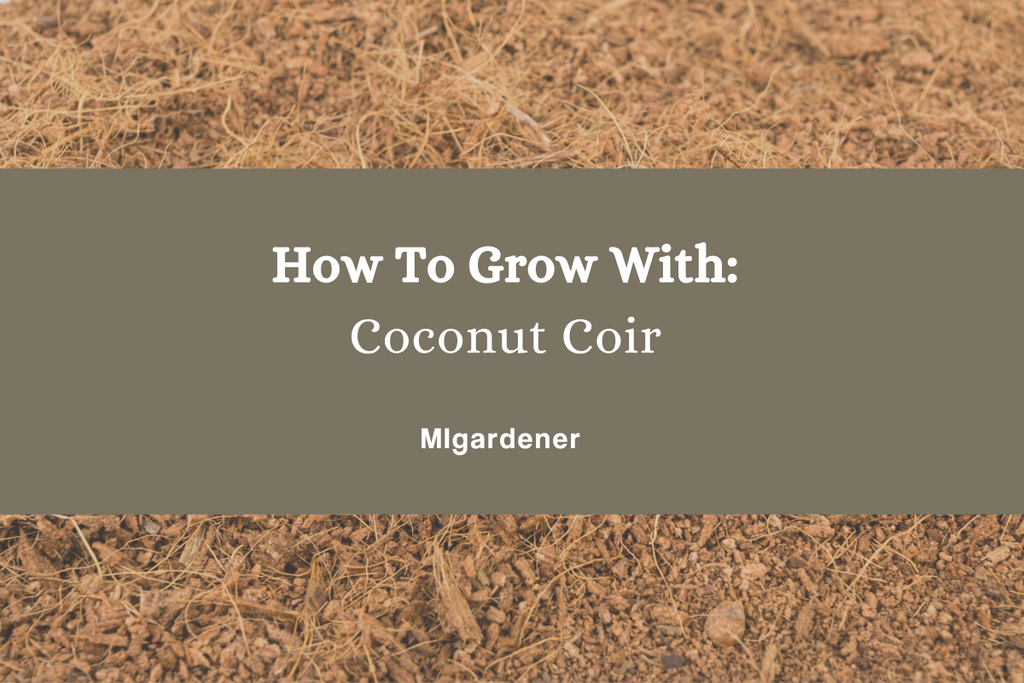
How To Grow With: Coconut Coir
Did you know? The global production of coconuts was 63.7 million metric tons, or 138,000,000,000 POUNDS! Most of which, was wasted. Until a discovery was made that turned this bi-product into garden gold! The remaining shell and husk can be mulched down which can behave just like soil. This is known as coco coir. Some people also will call it coco-peat, because it is a peat moss replacement but behaves very much the same.

Coconut coir is a natural fiber that is derived from the husk of coconuts. It is a versatile and sustainable material that has a wide range of uses in gardening, farming, and even oil spill cleanup!
One of the main uses of coconut coir is as a growing medium for plants. Coconut coir is lightweight, highly absorbent, and has excellent drainage properties, which makes it an ideal choice for growing plants. It is also pH-neutral, which means that it can be used to grow a wide variety of plants without the need for additional soil amendments.

Coconut coir can be used as a soil amendment to improve soil structure and water retention. When mixed with soil, it can help to loosen compacted soil and improve drainage, which can help to prevent waterlogging, root rot, damping off, anaerobic soil, and other problems. Coconut coir is also a good source of organic matter, which can help to support healthy microbial activity in the soil. You can pick some up for your garden HERE.
To use coconut coir, it is important to first rehydrate the material. This can be done by soaking the coir in water for several hours, or by adding water directly to the coir and allowing it to absorb the moisture. Once the coir is fully hydrated, it can be used however you wish.
Coconut coir can also be turned into a superior potting mix or seed starting mix free of sphagnum moss. Which has become more sustainably harvested throughout the years, but still is not preferred by many gardeners. This makes coco coir a perfect substitute.
To make potting mix:
mix coco coir with an adequate amount of water to hydrate the mix. Once the coco coir is fully expanded with water, mix in 1 part Perlite, 1 part vermiculite, and your choice of organic fertilizers. We use Trifecta+, and we use roughly 1/4 cup per gallon.

Another common use of coconut coir is as a substrate for mushroom cultivation. Coconut coir can be used to grow a variety of mushroom species, including oyster mushrooms and shiitake mushrooms to name a few. It provides a clean, sterile environment for the mushrooms to grow, and is also highly absorbent, which helps to maintain optimal moisture levels.

Coconut coir can also be used as a bedding material for livestock, such as chickens and horses. It is highly absorbent and helps to control odors, which can make it a more pleasant and hygienic environment for the animals. Coconut coir can also be used as a natural litter for cats, which is an eco-friendly alternative to traditional clay-based litters.
note: Once coco coir has been soiled and needs to be refreshed, spread it in the garden or compost it for maximum usefulness!
Regardless of how you use your coir, I hope you learned something new, enjoyed reading this post, and hopefully it hellps your garden in some way.
Grow bigger, - Luke
I have been using Coco coir for a while but did not know it could be used in so many ways. That is Awesome! Is all ovo coirsyerileor does it need to say that specifically?
Leave a comment